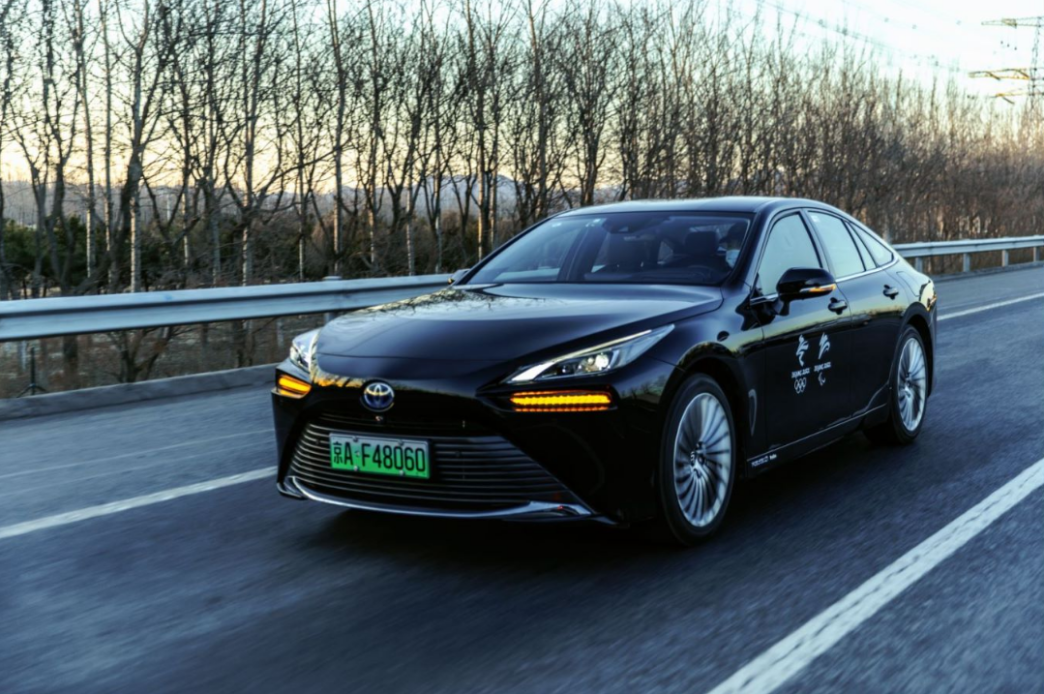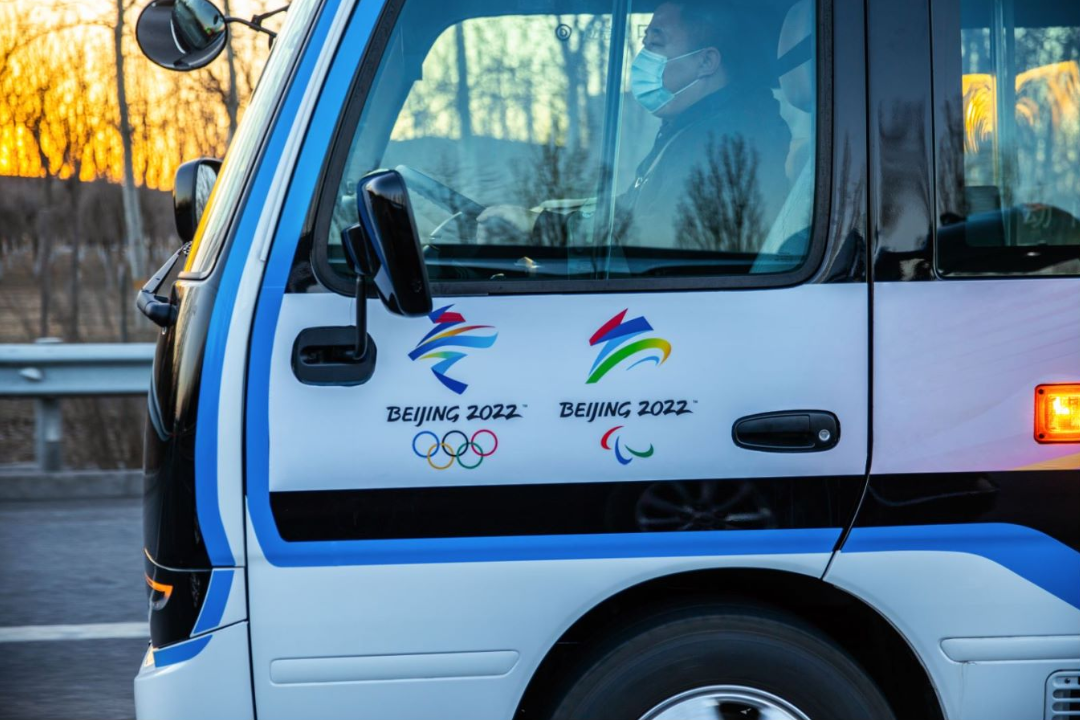Author | Wang Yunpeng
As American sci-fi writer William Ford Gibson once said: “The future is already here, it’s just not evenly distributed.” And as far as the current use of new energy is concerned, “the future is already here and is gaining popularity.”
Without going too far, let’s take the Beijing 2022 Winter Olympics and Paralympic Games, which recently ended, as an example. In addition to venues with names such as “Ice Ribbon,” “Snow Ruyi,” “Snow Dragon,” and “Ice Cube,” which are full of Chinese traditional cultural flavor and fashion sense, the realization of “100% green electricity operation” is also the most eye-catching highlight of this Winter Olympics and Paralympic Games.
It is worth mentioning that while each venue achieved “100% green electricity operation,” the transportation vehicles operating outside the venues also added “a touch of green” to the games. According to the official statistics of the Beijing 2022 Organizing Committee, the scale of energy-saving and clean energy vehicles during the Winter Olympics and Paralympic Games reached 85.84%, the highest in the history of Winter Olympics and Paralympic Games.
Among them, the biggest contributor is Toyota, the first car company to establish a global partnership in the field of mobile travel with the International Olympic Committee and the International Paralympic Committee. It is reported that during the Winter Olympics, Toyota delivered 2,205 official vehicles to the Beijing Organizing Committee, including 140 second-generation MIRAI FCEVs (hydrogen fuel cell electric vehicles) put into mass use for the first time in China and 107 Coaster hydrogen engine buses (including 2 welfare buses) specially designed for the conference in Yanqing and Zhangjiakou to operate as athlete shuttle buses.

During the Winter Olympics, Toyota’s FCEV models accumulated a total mileage of 397,104 km, reducing carbon dioxide emissions by 113,737.44 kg. With outstanding achievements, Toyota has helped implement the “green” concept of the Beijing 2022 Winter Olympics and Paralympic Games.
After this Winter Olympics, Toyota will also actively promote the reuse of FCEVs in the transportation service vehicles for this event and hope to take this opportunity to continuously promote the development of China’s hydrogen fuel cell industry.

For a time, Toyota was labeled as an “electrification conservative” because of its caution and hesitation to quickly enter the field of electric vehicles, unlike some other car companies. However, from the perspective of the Beijing 2022 Winter Olympics and Paralympic Games, the current Toyota is no longer the “Toyota that hesitated in the electrification transformation” in people’s impressions.# The Pioneer of Carbon Reduction
Currently, carbon reduction has become a common goal of major world economies. The Chinese government announced its goal of peaking carbon emissions by 2030 and achieving carbon neutrality by 2060, while the 27 EU member states have decided to increase emissions reduction by 2030 and achieve carbon neutrality by 2050. The Biden administration has announced the United States’ return to the Paris Climate Agreement.
In this context, the automotive industry, as a major emitter of carbon, is also taking action, especially automobile manufacturers who are actively exploring paths towards carbon reduction to help achieve the “dual carbon” targets. Toyota Motor Corporation is one of the representative examples.
In fact, as a global giant with tens of millions of vehicles produced annually, Toyota Motor Corporation has always had a profound background in environmental protection. In 1993, Toyota Motor Corporation launched a project called “G21” and proposed to produce “the cars the Earth needs for the 21st century.” Four years later, Toyota Motor Corporation released the world’s first mass-produced hybrid vehicle, the Prius.
Since then, Toyota Motor Corporation has used the Prius as a starting point to gradually establish a complete technical route for electrification covering HEV/PHEV/BEV/FCEV and succeeded in covering passenger and commercial vehicles to become a global leading brand that has consistently adhered to all-round electrification technology.
However, these achievements have not satisfied Toyota Motor Corporation. In 2015, it released the “Toyota Environmental Challenge 2050” strategy, which aims to “approach zero negative impact of cars and bring positive value to society.” The goal is to reduce the CO2 emissions of new global cars on average during driving processes by 90% from 2010 levels by 2050.
At the same time, in combination with its basic concept of “environmental vehicles can only make a real contribution to the environment when they are popularized,” Toyota Motor Corporation can be said to have engraved the concept of sustainable development of “society, people, and the earth” into its own genes from the beginning.
What is worth mentioning even more is that this concept of Toyota Motor Corporation now has a more fashionable name, “carbon neutrality.”
In 2020, Toyota Motor Corporation set up Beijing United Fuel Cell System R&D Co., Ltd. with companies including FH Group, FAW, Dongfeng, GAC, and BAIC Group. In 2021, Toyota and FH Group again jointly established Huafeng Fuel Cell Co., Ltd. Both companies are committed to helping China achieve carbon neutrality through local research and development and production of hydrogen fuel cells.
It can be said that whether it is a forward-looking concept, deep technical accumulation, or a complete strategic layout, they all show that carbon neutrality has long become the “top-level design” of Toyota Motor Corporation and runs through the company from top to bottom.
Moving towards the “Dual Carbon” Target with All-round ElectrificationIn the context of promoting the global energy revolution, Tesla seems to be the recognized representative in the industry. Since the company launched Model S in 2012, it has inspired the steadfast belief in abandoning traditional energy and the beautiful vision of a new energy society worldwide. However, achieving carbon neutrality is a grand vision, and relying solely on pure electric vehicles to achieve this goal may not adhere to the objective laws of the automobile industry. Toyota has long foreseen this issue and proposed that in order to achieve carbon neutrality, the automobile industry needs to provide more diverse options for low-carbon transportation for consumers. They aspire to offer a range of sustainable and practical transportation services and products that cater to different regions, purposes, and usage scenarios. In other words, Toyota’s approach is different from Chinese domestic brands’ leapfrogging and German and American brands’ continuous push for purely electric vehicles. Toyota is developing a complete set of future-oriented, all-encompassing electrification technologies.
Toyota not only talks about this approach, but also practices it. Public data shows that since the launch of the world’s first mass-produced hybrid electric vehicle (HEV) Prius in 1997, Toyota has continuously provided users with a wide range of options in the HEV/PHEV/BEV/FCEV all-encompassing electrification field. As of February 2022, Toyota’s electrified vehicle sales worldwide had surpassed 20 million units, reducing CO2 emissions by 160 million tons and saving 65 billion liters of fuel. According to Toyota’s calculations, since the birth of the HEV model, it has reduced the equivalent of carbon dioxide emissions of 5.5 million EV models, while only consuming batteries equivalent to about 260,000 EV models. In other words, using batteries equivalent to 260,000 EV models, Toyota has reduced the equivalent of carbon dioxide emissions of 5.5 million EV models.
Although Toyota has made a significant contribution to “decarbonization” based on the above data, it is still not enough to achieve the entire automobile industry’s carbon neutrality goals. In order to better promote the application and popularization of all-encompassing electrified vehicles, Toyota is continuously collaborating with partners. For example, in the HEV field, Toyota mainly provides patents for free to promote related work. In terms of FCEV, in 2019, Toyota collaborated with Tsinghua University to establish a joint research institute to conduct research on the active use and application of hydrogen, and in 2020, it established a fuel cell system research and development company with several Chinese partners to promote the popularization of hydrogen fuel cell vehicles and the construction of a hydrogen energy society.
 In the author’s view, Toyota’s all-round acceleration of electrification technology is not only promoting its own development, but also promoting the development of China’s new energy automotive industry and the realization of the automobile industry’s carbon neutrality goals.
In the author’s view, Toyota’s all-round acceleration of electrification technology is not only promoting its own development, but also promoting the development of China’s new energy automotive industry and the realization of the automobile industry’s carbon neutrality goals.
Building a future mobile community with zero emissions throughout the entire process
Every decarbonization of energy will change the development process of human civilization. In the current automotive industry, the “dual carbon” goals have become the “commanding baton.” However, if the understanding of carbon neutrality in the automotive industry is simply replacing the engine with electric motor, it is undoubtedly superficial.
For automobiles, achieving carbon neutrality goals is not as simple as replacing engines with electric motors. As Toyota mentioned in the “2050 Environmental Challenge,” in addition to relying on vehicle technology progress, the automobile industry must reduce carbon dioxide emissions from all aspects of vehicle production, use, recycling and waste disposal in order to achieve carbon neutrality.

Therefore, Toyota chooses to start from a full life cycle perspective, reduce carbon dioxide emissions in manufacturing, storage, use, recycling and reuse, and waste treatment through its own efforts and innovative practices.
Take hydrogen fuel cell technology as an example. In terms of use, Toyota has already cooperated with Chinese partners to develop a high-power, long-lasting hydrogen fuel cell system TL Power 100, which is suitable for commercial vehicle use in China.
“Using environmental technology to help China achieve carbon neutrality.” It is precisely because Toyota has always adhered to the belief that combines “vision and vision” that the electrification transformation of Toyota has taken a completely different path from the beginning, that is, always adhering to and practicing carbon neutrality and “human sustainable development.”
Focusing again on the Chinese market, as a car company rooted in China for more than 30 years, Toyota has always been using practical actions to assist China’s sustainable development, and “mass produce happiness” for Chinese consumers and Chinese society.
This article is a translation by ChatGPT of a Chinese report from 42HOW. If you have any questions about it, please email bd@42how.com.
